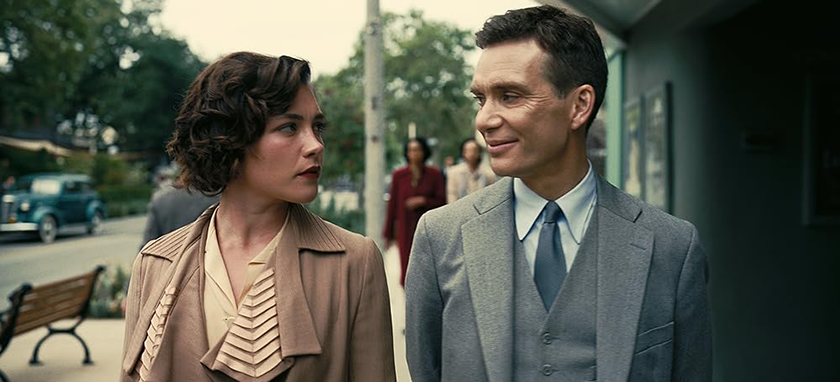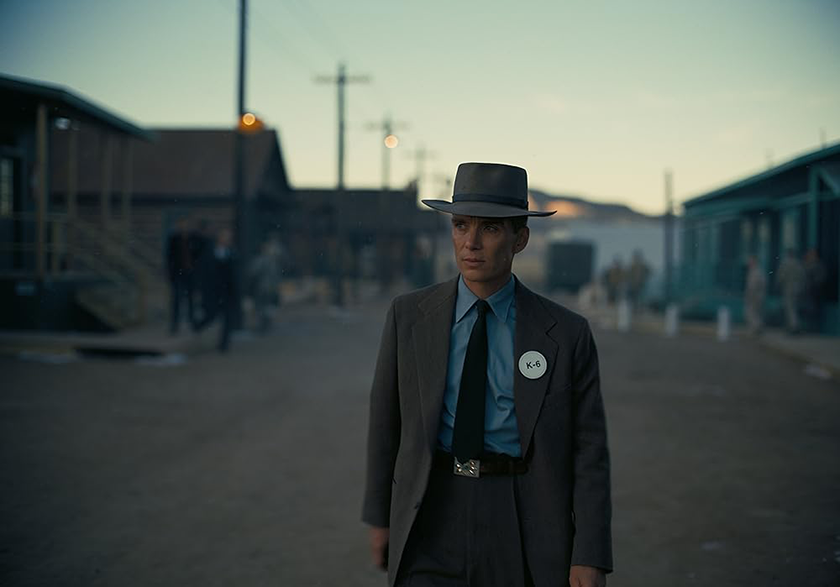Oppenheimer still has people asking questions. We look at the film to get it, and the quote “Now I am become Death, the destroyer of worlds,” explained.
It’s hard to know what’s left to say about Christopher Nolan’s 2023 biopic, Oppenheimer. The film depicts multiple decades of the life of J. Robert Oppenheimer (Cillian Murphy, Dunkirk, Batman Begins), the proclaimed father of the atomic bomb that ended World War II in 1945. It won multiple awards including Best Picture, is the second-highest grossing R-rated film of all time, and renewed the public’s interest in all things surrounding Oppenheimer and the atomic bomb. But one aspect of the movie that some people still seem unclear on is the presence of a line that it utilizes twice: “Now I am become Death, the destroyer of worlds.”
Where does this line come from? What does it mean in general and in relation to Oppenheimer? And why did Nolan choose to place it where he did in the film? I intend to answer all of these questions, at least as succinctly as I can. Because the line is so thematically linked to Oppenheimer as a whole, I will be going into spoilers for the entire film during this explanation. Consider that your official warning, unless you want me to drop my own figurative bomb on any surprises the movie may offer you. Keep reading for a look at the film and the “I Am Become Death” line, explained!
THE HISTORICAL MEANING OF “I AM BECOME DEATH”

First, I need to briefly go into History Teacher mode and explain the origins of this quote. As Oppenheimer highlights, the entire line is from the Hindu scripture Bhagavad Gita. The statement is uttered by an incarnation of the Hindu god Vishnu, who is demonstrating his godly power to convince one Prince Arjuna to fight in a war against his own wishes. Vishnu’s intent was to reenforce the Hindu belief that death is not the end of souls and that those Arjuna kills will be reincarnated, but “I am become Death, the destroyer of worlds” is also ominous enough to invoke the fearsome destructive capabilities of a god or godlike figure in people’s minds.
In the 1965 NBC News documentary The Decision to Drop the Bomb, J. Robert Oppenheimer recalls his mindset during the successful test of the atomic bomb. With melancholy clear on his face and in his voice, he mentions how the story from Bhagavad Gita came to his mind at the time, dropping the, “I am become Death,” quote. This moment in the documentary is when a lot of the American public truly recognized the turmoil in Oppenheimer’s heart over what he and his creation had done. It’s lived on for decades as an inescapable part of the man’s historical status, including being sampled in Linkin Park’s best album (fight me), “A Thousand Suns.”
OPPENHEIMER’S FIRST USE OF “I AM BECOME DEATH”

So, sure enough, the scripture is referenced in Nolan’s Oppenheimer … although its first reference may still be a bit puzzling for some. “I am become Death,” initially appears when Oppenheimer and his lover, Jean Tatlock (Florence Pugh, Midsommar, Dune: Part Two) have just finished having sex. Jean goes to his bookcase, happens to pull down Bhagavad Gita and, impressed by Oppenheimer’s ability to read it, has him recite the line in question to her. Unless Nolan was able to watch the real Oppenheimer and Jean’s sexual affairs via some Interstellar-style time portal in the bookcase, that specific moment of Oppy reciting the famous line was clearly made up for the film. But why?
Sure, it makes sense to have the line in a sequence that takes place before the bomb test, but why was this scene chosen? Outside of allowing for the wordplay, “I am be cum,” which singlehandedly warrants Oppenheimer’s Best Picture win. Well, let’s look at everything leading up to the scene. At the start of the film (at least chronologically), Oppenheimer has a wide-eyed future in front of him. He has a clear passion for physics and theory, and his mind capable of perceiving life at an atomic level that most can’t. He’s gung-ho about learning all he can and teaching it to others, and he finds himself thriving prior to the war. He’s a top mind in his prime, at the forefront of scientific history … and, soon, he finds himself in the afterglow of his sexual encounter with Jean.
Because of how fast-paced Oppenheimer is and how much material it covers in so little time, these years of his life all feel like one huge power trip. We see so many of his early accomplishments, successful encounters, and even budding arrogance and bold political assertions. At this point, he feels powerful, like a sort of god himself, which ultimately climaxes with Jean. (Yes, I chose that phrasing deliberately and I’m happy I did.) As when he’s coming down from his high and asked to say the famous text, he utters the words with an air of calm authority and power. It’s just a story to him at that point, one that he can recite to look even more impressive.
OPPENHEIMER’S SECOND USE OF “I AM BECOME DEATH”

When, “I am become Death,” is heard again, it’s through Oppenheimer’s inner voice as he watches the successful explosion of the test atomic bomb, matching his 1965 recollection of the quote. As the line plays alongside the visually breathtaking power of the bomb, it suddenly comes across as much, much eerier. Like before, its context involves a great achievement for Oppenheimer, something that wields unbelievable power that makes him as close to an actual destroyer of worlds as he’s ever been … but that’s also where his apprehension comes in.
Now that Oppenheimer actually sees the devastation his creation can bring, he starts finally coming to terms with the fact that he has a hand in the horrors that will befall Japan once the bombs are dropped on them. The dread that he’s been suppressing throughout the bomb’s creation can no longer be pushed down. The path from great achievement to terrible consequences is at the heart of Oppenheimer, and by having the Hindu scripture be referenced at two very different points, that path becomes that much more pronounced, and the reckoning Oppenheimer faces afterward feels that much more personal.
But there’s another historical detail that I didn’t even know about until some very recent research. The atomic bomb test was given the codename Trinity, which Oppenheimer chose as a reference to the poetry of John Donne. And, as I found out, the person who introduced him to Donne’s work was Jean Tatlock. It’s been widely speculated, though not confirmed, that Oppenheimer named the test in honor of Jean, who had committed suicide by that point (as shown in the film). Knowing that, having a scene with her linked to the test sequence via, “I am become Death,” has even more potency, as if Jean’s spirit and influence were still there with Oppenheimer during the pinnacle of his professional life.
THE BROADER MEANING OF OPPENHEIMER AND “I AM BECOME DEATH”

On top of that, linking the Hindu quote to these separate events also thematically connects the damage done by Oppenheimer’s professional and personal mistakes, highlighting how they both contribute to the revocation of his security clearance by the end of the film. His relationship with Jean, his humiliation of Atomic Energy Commission Chairman Lewis Strauss (Robert Downey Jr., Iron Man, Tropic Thunder), and his mishandling of certain security issues due to his personal qualms, were all internal flaws that clashed horribly with the crookedness and blind ambitions of the broader government, who sought to recklessly advance nuclear weaponry and tore down anyone who didn’t line up with their philosophies.
The actions of many, including Oppenheimer himself, left their own figurative chain reaction and ruin in their wake … in other words, the whole story of Oppenheimer’s life plays out like a metaphorical atomic bomb, giving, “I am become Death,” even more context to read into. In fact, Oppenheimer’s whole perspective in the film is labeled “Fission,” which refers to the splitting of atoms to get a nuclear reaction. Not only is this how the original atomic bombs worked, but it symbolizes how Oppenheimer tried to separate his mistakes from his life and work, only to get explosive results.
THE ULTIMATE TAKEAWAYS OF OPPENHEIMER

This little “Explained” piece was made in part because apparently some people never even knew about the meaning behind, “Now I am become Death, the destroyer of worlds.” They just didn’t know where that came from. Or, if they did, they were thrown off by it showing up when Oppenheimer is with Jean making a … different kind of explosion. But I think that speaks to some of Oppenheimer’s many merits: it’s educational on top of being riveting on its own. I was shocked to learn just how much the film got right, including Oppenheimer’s public humiliation of Lewis Strauss and even his attempt to poison his teacher’s apple.
Oppenheimer is primarily a look at its main character’s life. But at its core is the danger that not just him, but humanity in general, are ill equipped to handle the godlike power of atomic weaponry, and that the human race as a whole may become the destroyer of worlds. That’s why Oppenheimer’s invocation of that famous scripture in 1965 hit so hard, long after he passed away from throat cancer two years later (and four years after we see him at his oldest in Oppenheimer). Nolan cleverly references the scripture in ways that highlight the personal and wide-scale frailties of not just one of the world’s most important figures, but the people who were left behind to make use of what he did.
Oppenheimer is now available to watch on digital and on demand. Read our review of Oppenheimer and our article on Nolan’s fictional fractured man in Oppenheimer!

